Varieties of toilets
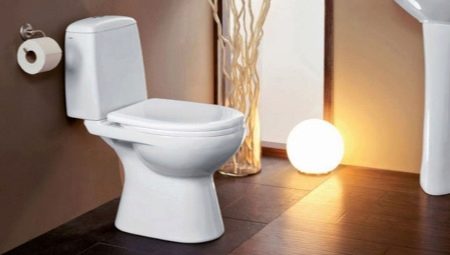
Since the Middle Ages, mankind has been trying to solve the problem of waste disposal in the most comfortable way. However, only after the invention and implementation of sewerage and water supply systems did this become really possible. Since then, plumbing installations have made great strides forward. Modern toilets meet increased requirements: they are comfortable, stylish, and equipped with many options. There are many parameters for classifying toilets: material, shape, flush, and so on.

Peculiarities
There is a standard according to which several points must be observed in any type of design:
- load from 200 kg;
- the volume of the drain device is from 6 liters;
- flush capable of cleaning the bowl according to specified conditions.
Regardless of the manufacturer, these minimum parameters are mandatory.
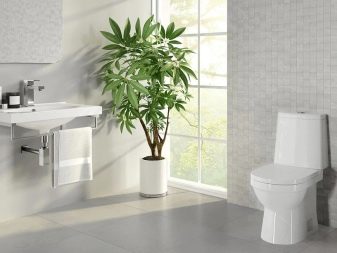
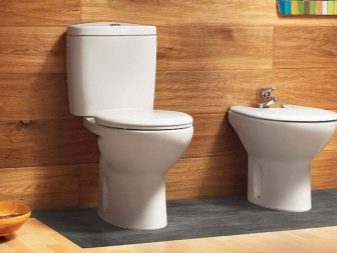
Shapes and characteristics of toilet bowls
Modern models of toilet bowls range from the simplest, budgetary to unusual, elite, designer options. The choice here depends to a large extent on personal preferences and stylistic orientation.
Oval and circle are considered canonical variations. These toilets are traditionally good for classic interiors. Thanks to the streamlining, they are perfectly cleaned, cleaning is not complicated by anything. Looks good in small bathrooms.
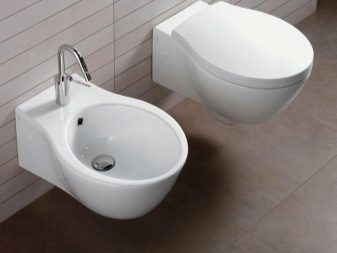
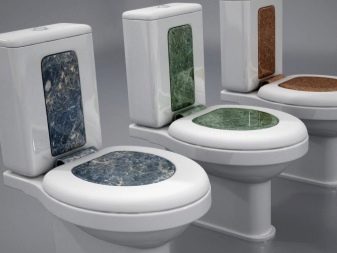
Rectangular and square look more modern and dynamic in the interior, therefore high-tech, minimalism, futurism, loft are appropriate in design compositions. Right angles will take up space from a small room, so such shapes are preferable for overall areas.

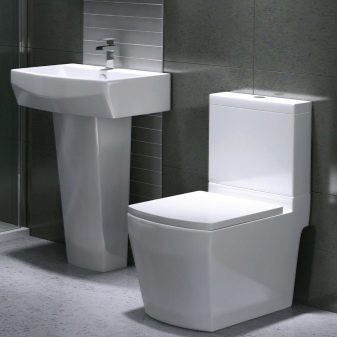
- Drop-shaped, eggs - these are novelties of modern design thought, it is not easy to find them in the mass market. They look very impressive in original interiors.


Bowl views
This is a very important parameter affecting the choice of a plumbing fixture. The main requirements for the bowl:
- hygiene;
- comfort;
- functionality.
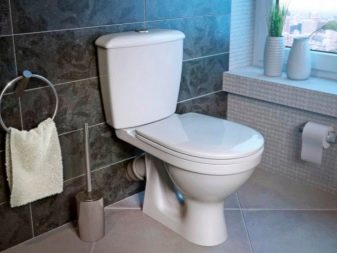
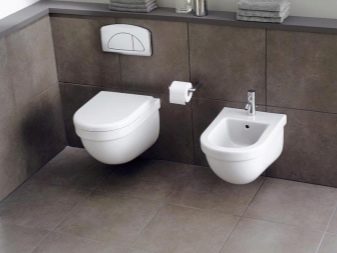
The design of the bowls can have individual characteristics thanks to the developments of a particular company, but in general it is divided into several main types.
Funnel bowl. This is the most successful bowl in terms of hygiene. The drain hole is located in the very center here, so a thorough flushing is enough to remove everything the first time. But this species has a disadvantage in the form of possible splashing.
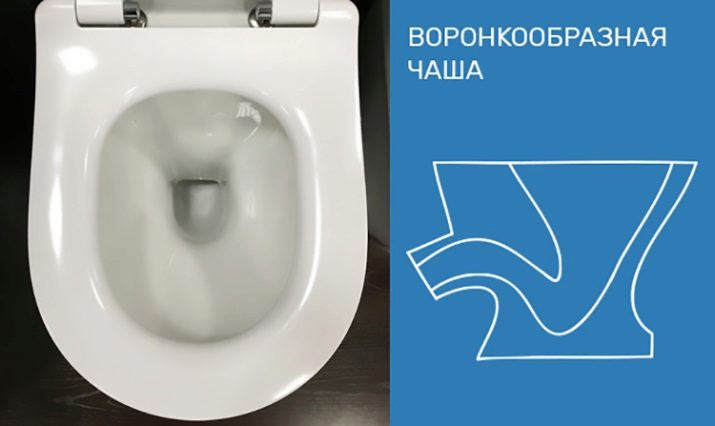
Bowl plate. This bowl has a flat shelf that is washed by streams of water. No splash occurs in this design. But the hygiene of the bowl is low - you have to wash it off several times and clean it additionally.
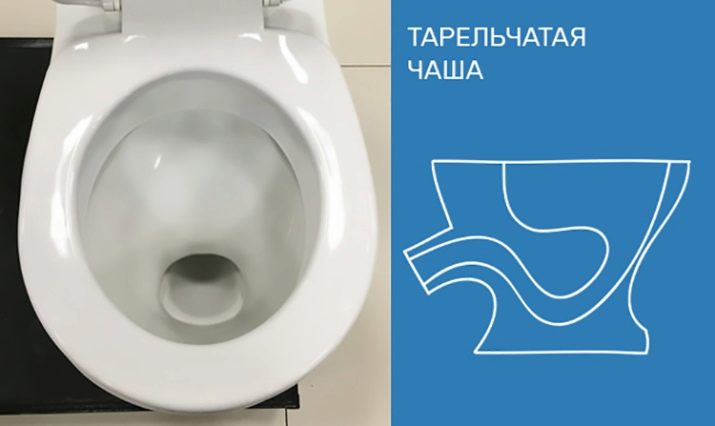
Bowl visor. This type is most often seen in stores, it combines the advantages of both previous designs. Inside the bowl there is a small ledge-slope located closer to one of the walls.

The shape of the bowl should be as convenient as possible for flushing. In combination, these two elements of the system prevent the formation of salt deposits, provide high-quality flushing.
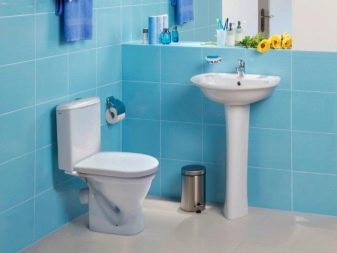
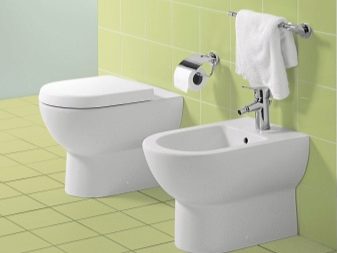
What are the flush types?
When choosing a toilet for your home, you need to consider the type of flush. This is the flowing direction of water that washes the bowl in different ways. Each method has its own pros and cons.
Direct flush... Water is discharged from one point and directed to one side. This type is considered to be the most hygienic, since it does not provide the highest quality ablution, in addition, the system is noisy. At the same time, this design is inexpensive and durable.
Circular flush... Here water flows are directed at different angles to the center and capture all sides. This system is quieter and more hygienic.

Sometimes you can find such a flush system, when the bowl is pre-filled with water, and then a quick flush occurs. Here absolutely the entire surface of the bowl is washed. However, among the minuses is a large water consumption. When flushing, the standard volume should be at least 6 liters, however, dual-mode systems allow you to reduce water consumption through an economical, half flush.
Types of drain start
The cistern can have different modifications. The connection to the bowl is also varied. First of all, there are joint structures and separated ones.
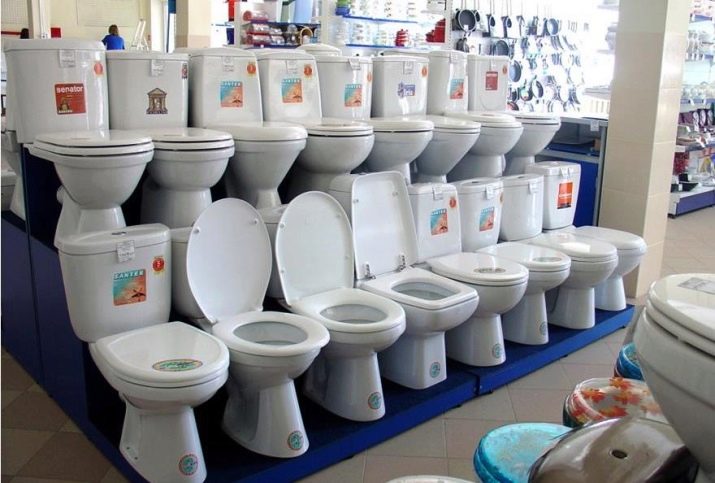
Divided
In the first version, the drain tank is located much higher than the bowl and is connected with a pipe... Water is supplied after actuating the lever on the chain. This is the retro version that first hit the market. It has one big plus - high-quality flush and excellent pressure. Now this design is only installed in vintage interiors.
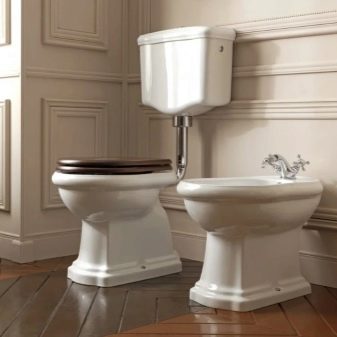
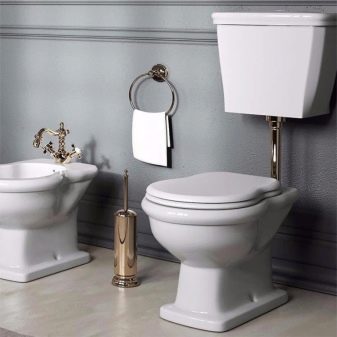
- The second variant of the split design is a bowl and a tank hidden in the wall. It is used in suspended and attached systems, looks great in modern minimalist interiors. In this case, the plastic tank is hidden by a false wall, on the surface of which the drain button is located.
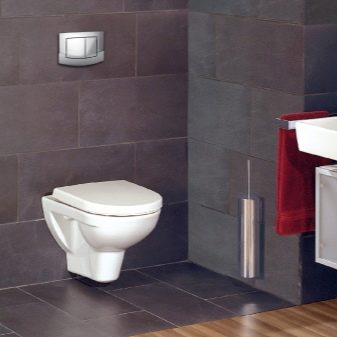

Joint
In the most common version, such a system consists of a bowl and a tank attached to it. This construction is called compact. This is the most popular type of toilet, it does not require complex installation, it can be installed independently. The strength and proximity of the wall does not matter.
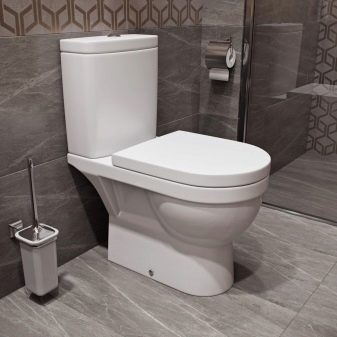
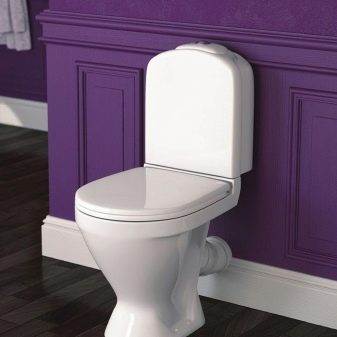
Another popular toilet of this type is a monoblock. It is a single, undivided tank and bowl system - one block. These toilets are very practical, reliable and hygienic. The only negative is the severity of the structure.
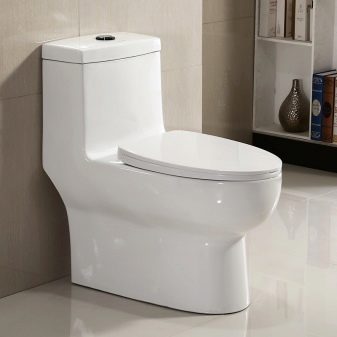

- The same variety can be attributed to toilets, in which there is no cistern at all. Here, the drain is carried out directly from the pipe. Most often they are installed in public places.
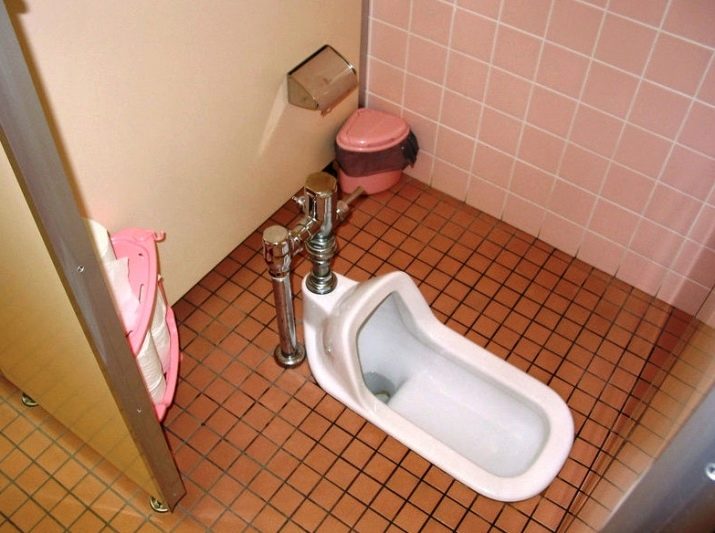
As for the drain outlet, that is, vertical, oblique, straight bends. It is important to evaluate the type of sewer hole before purchasing a toilet..
- Slant type release. In the housing stock of the 70-80s, this type of sewerage was the most common. The exit is at an angle.
- Horizontal or direct outlet - most often found in modern apartments. Here the exit is parallel to the floor.
- Vertical - aimed straight at the floor. Mostly found in old houses.
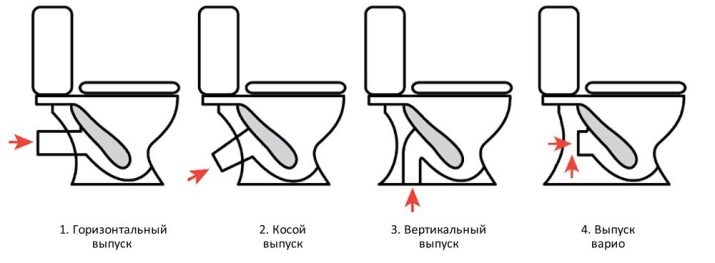
There are toilets with a universal outlet, however, most models require adapters to be installed on an inappropriate outlet.
Mounting methods
According to the method of fastening, the toilet bowls are divided into several varieties. It is this classification that often turns out to be decisive. According to the installation method, the systems are divided into floor-standing, suspended and attached.
Floor structures. This is the most budgetary variation, reliable, practical, durable. Does not require additional skills during installation, it can be installed independently. Such a system is attached to the floor. Among the minuses: it takes up a lot of space, so it is not very convenient in small bathrooms. Also, cleaning is made more difficult as there are many inaccessible areas. You can easily replace such a toilet, just unscrew the anchors. The floor will remain intact.
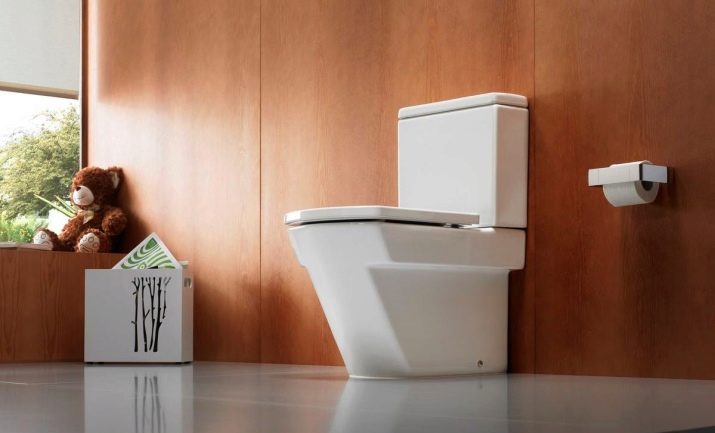
Wall-mounted structures. They are more suitable for small rooms, they almost look like hanging ones. It is the attached toilets that are corner and fit perfectly in the corner of the bathroom. This type is practical, reliable, but requires mounting the tank in the wall. This creates additional time and financial costs.
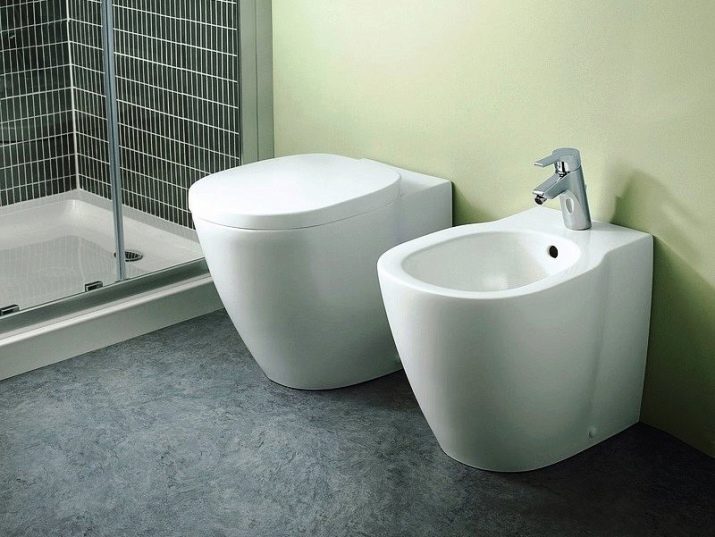
Suspended structures. They are gaining more and more popularity in recent years. Ideal for small spaces. They are quite sturdy, cleaning is very easy, since there are no hard-to-reach places. The saved space of the bathroom allows you to install a bidet or use the area for another purpose. The bowls in this variation are attached to the wall by means of a frame or block installation. The frame is attached to the wall and floor and can be used for any wall. The block unit is fixed only on the wall, so the toilet can be positioned only along the carrier. The cistern is hidden behind a false wall and is decorated according to the design.
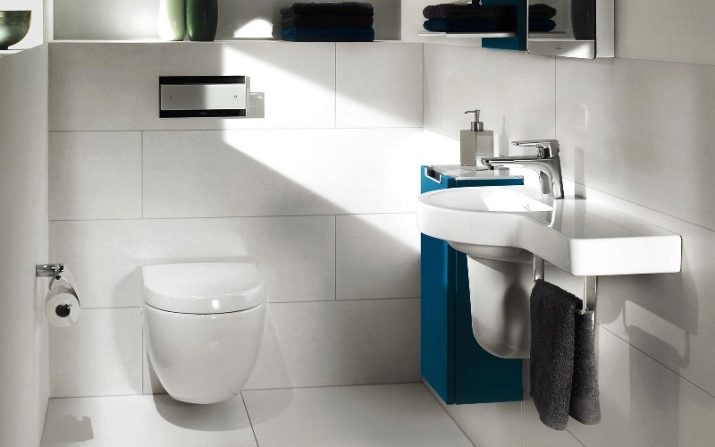
Almost any type of toilet has pros and cons. It is important to assess the area of the bathroom, the style of the interior, and financial capabilities. Then the choice will be narrowed down to 1-2 varieties.
Varieties by materials
The very first toilet was made of earthenware and was equipped with a wooden seat. Now, if you wish, you can find an identical configuration, but the choice of materials for the manufacture of toilets, cisterns and lids is more diverse today.
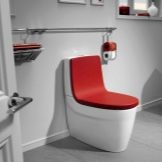
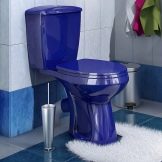
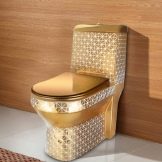
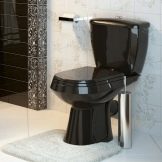
- Faience. Quite a popular and demanded type of raw material. This ceramic material is not very strong and the porosity allows moisture and odors to be absorbed. This affects the time and quality of cleaning the bathroom. Today, earthenware toilets are in demand mainly due to their low prices. Unfortunately, cracks and chips often appear on them.
You should choose earthenware models with a special coating, which makes the structure stronger and repels dirt.
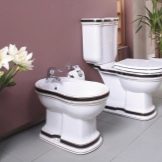
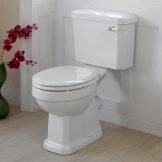


Porcelain. Toilet bowls made of this material look almost like earthenware. But they are more durable, durable and practical. The surface of this ceramic raw material with the addition of quartz is quite smooth and repels dirt. This is the most popular category of sanitary ware, which has one drawback - a higher cost than faience. Modern production produces toilet bowls made of ceramic material with different inclusions. This allows you to reduce weight, cost, but the strength of such materials decreases.
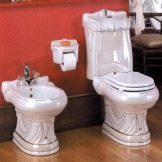
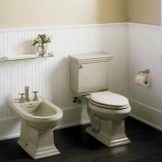
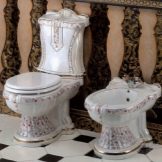

Metallic... First of all, these are stainless steel and cast iron. The latter, however, due to its enormous weight, is not used now with millet.Steel toilet bowls are in demand in public places due to their excellent hygiene and the highest durability. The only drawback is the high price, they are more expensive than porcelain. Gold toilet bowls are also referred to as metal varieties. However, this category belongs to rare, elite ones.




Glass. Another rare type that is often considered as a design for unusual bathrooms. A transparent toilet is not only expensive, but also displays all the contents, so it is not in great demand.
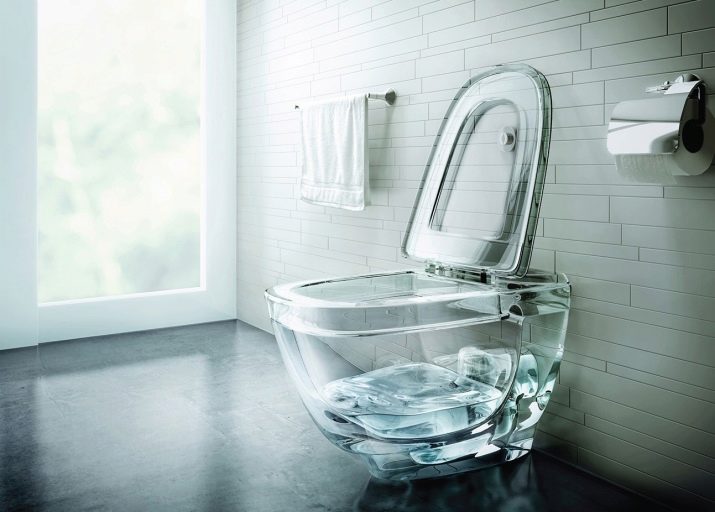
Stone. They mainly use marble and its imitation. These are very expensive, high quality, durable, hygienic models. Most often they are made to order for original design solutions for bathrooms.
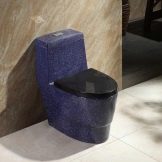
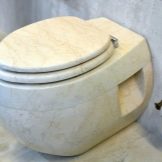
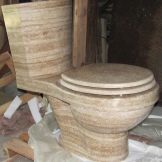

- Plastic. First of all, it is reinforced type acrylic. It is lightweight, easy to clean, hygienic. The structure of the plastic is non-porous, so dirt and odor cannot be absorbed. However, a plastic toilet bowl is easily deformed due to high temperatures or other influences. Most often used in summer cottages.
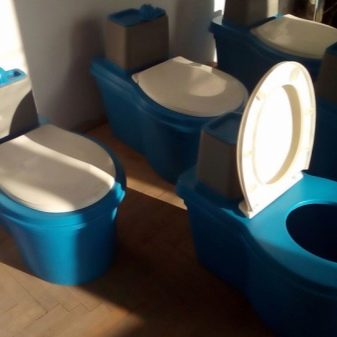
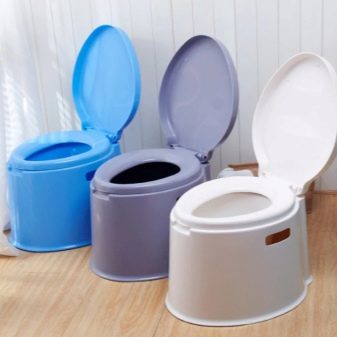
In addition to the material for the structure itself, what matters is what the seat and cover are made of. Most Popular: polyurethane foam and duroplast. The first is lighter, cheaper, but more susceptible to mechanical stress, scratches, fragile. Duroplast is more in demand due to its strength and additional capabilities. For example, microlift covers are very popular, when the cover slowly lays down on the seat and does not make sharp sounds.
For information on how to choose the right toilet, see the next video.








